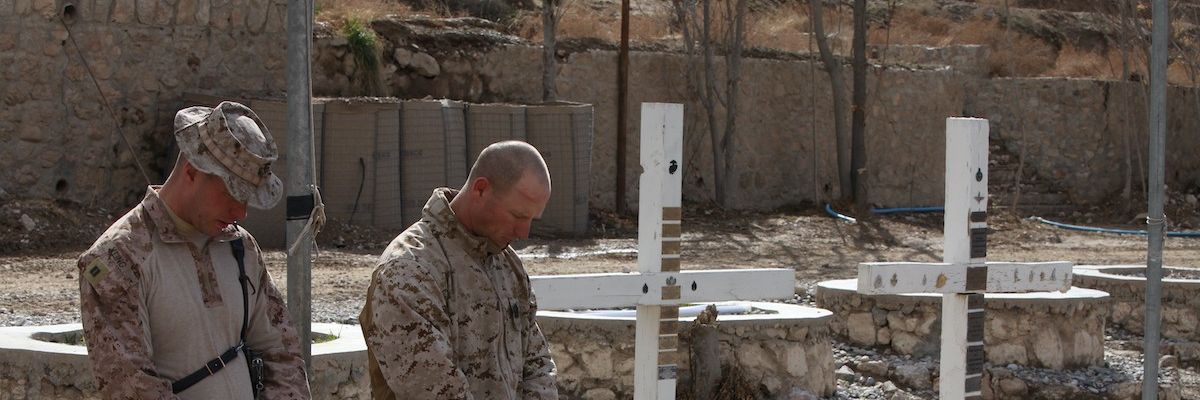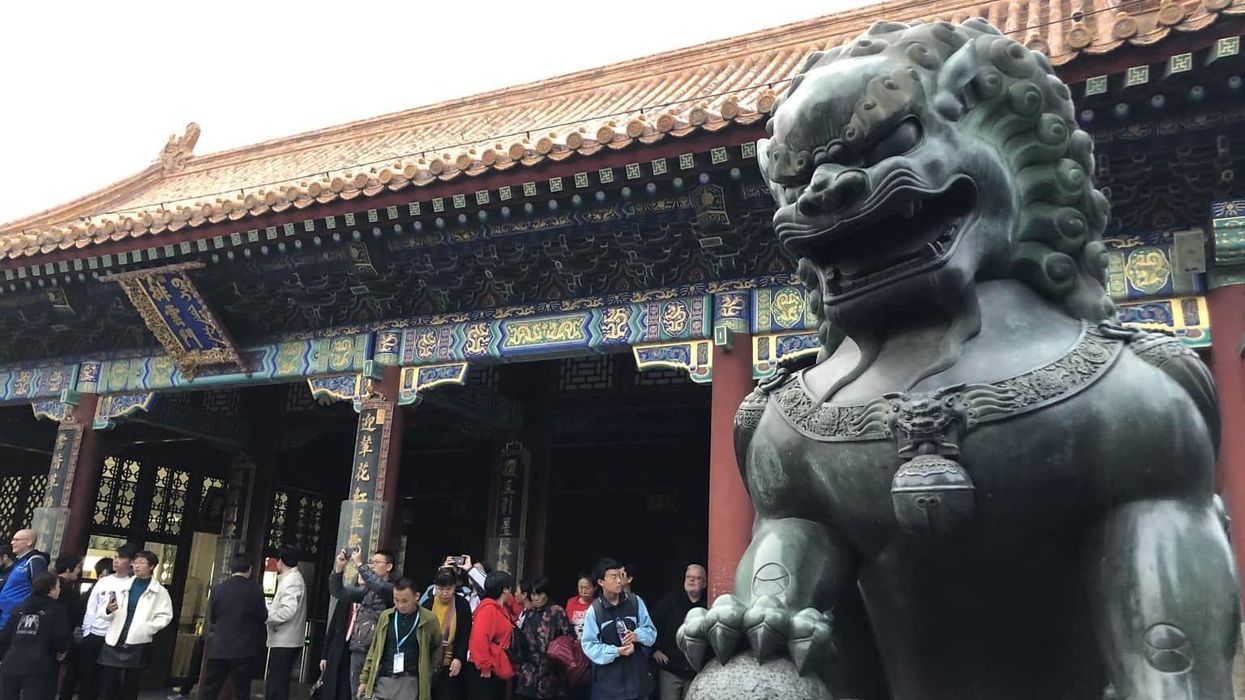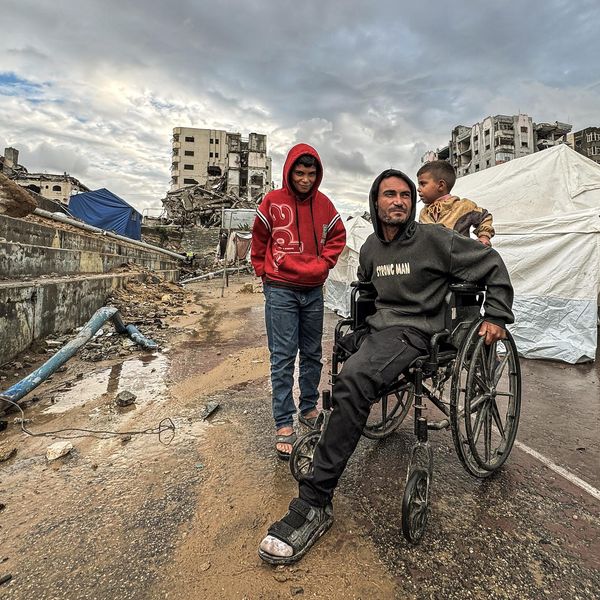President Joe Biden should have been basking in praise following the Senate’s approval of his $1 trillion infrastructure bill. But the Taliban had other plans for him. It overran nearly two dozen of Afghanistan’s provincial towns and then took Kabul, barely firing a shot. Ashraf Ghani, the U.S.-backed government’s president and author of the how-to book, “Fixing Failed States,” fled.
In just a couple of weeks, a 70,000-man insurgency caused the U.S.-trained 300,000-person Afghan National Defense and Security Forces, or ANDSF, to implode. The state apparatus midwifed by the United States disintegrated. Amid- the pandemonium at Kabul airport, American soldiers struggled to impose order and airlift Americans out as desperate Afghans swarmed, and even clung to, departing U.S. transport aircraft. Videos show some falling from airborne planes.
Critics quickly took to their keyboards and appeared on talk shows to lambaste Biden. The most vocal weren’t just saying that the evacuation was bungled, but that success in Afghanistan remained possible.
Their refrain: Biden precipitated the ANDSF’s collapse by announcing in April that all U.S. soldiers would leave by September 11. That demoralized the ANDSF and the Ghani government. Biden should have anticipated a rapid Taliban takeover instead of assuming that Ghani’s government and the ANDSF could survive, at least for a decent interval. The 1,000 troops he added were too few and too late. He has besmirched the reputation of the United States, they say, and emboldened its adversaries, among them China, Russia, and Iran.
Many of the critics have been retired generals or advisers to generals during the 20-year Afghanistan war. They now claim that it could still have been won and deride those who disagree. These were the folks who touted various sunny “metrics” that supposedly demonstrated steady progress in achieving U.S. aims in Afghanistan. Following one visit, one such adviser hailed the ANDSF’s “growing effectiveness,” citing American officers’ assurances that it was battle-ready and prepared to fight.
Not one of these critics foresaw what they now accuse Biden of failing to foresee but what the Taliban clearly understood — that the Afghan state was a house of cards. For months, the insurgents methodically used bribes and/or threats to persuade local notables, provincial officials, and military commanders to surrender in exchange for a form of amnesty, at least for now.
For argument’s sake, let’s stipulate that the Biden administration should have predicted what was coming because, well, it had reams of secret information that ordinary people lack and because, by July, some, but not all, intelligence agencies were warning of a rapid collapse.
But this merely shifts to Biden’s shoulders a failure whose roots extend back to October, 2001 when, following the 9/11 attacks, President George W. Bush ordered the decapitation of the Taliban government. In fairness to Bush, 9/11 was a massive shock, the first large-scale foreign attack on the continental United States since the War of 1812, and Americans wanted revenge.
Demolishing the Taliban regime proved easy. But then the United States had to fill the void by creating a state and army, something that couldn’t possibly be accomplished in a year or two. Plus, the Taliban soon regrouped. The result: Washington, already distracted by its 2003 invasion and occupation of Iraq, embarked on a protracted nation-building and counter-insurgency enterprise.
Soon, civilian and military contractors, experts on democracy-promotion and state-building, platoons of consultants, and companies that made tidy sums supplying and equipping American troops in Afghanistan got involved. That created a conglomerate of special interests with a financial stake in a vast project of social engineering, and in keeping it going.
Afghans have been routinely portrayed as corrupt; but anyone who peruses the reports of the Special Inspector General for Afghanistan Reconstruction, or SIGAR, will find overwhelming evidence of corruption on the American side, fueled by the billions of dollars that poured into Afghanistan. Moreover, as a Washington Post investigation found, “the CIA gave cash to governors, parliamentarians, even religious leaders.”
Still, each president handed the Afghanistan quagmire off to his successor. None wanted to be held responsible for “losing” Afghanistan, let alone another 9/11 attack. So 20 years passed at a total cost exceeding $2 trillion of which a mere $24 billion was invested in economic reconstruction, the rest in military-related expenses. But the Taliban, despite taking heavy punishment and losing many senior commanders and “shadow governors,” always replenished its ranks and kept fighting.
By the time President Trump, who had vowed to end Washington’s “forever wars,” was elected in 2016, the Taliban held more territory than it had since 2002.He understood that the war had lost support at home. Not that it ever demanded much from the vast majority of Americans. Without a military draft and with a government that preferred to borrow, rather than raise taxes, to cover the costs, this American way of waging war never provoked the public demonstrations, elite disillusionment, or electoral defeats that derailed political careers during the Vietnam era. And so it continues for years on end.
By the time of Biden’s election, Trump had already signed an agreement with the Taliban to reduce the U.S. troop presence to 8,600 by the fall of 2020 and to withdraw all American forces by May 1, 2021. If Biden had reversed course, he would have had to rely, presumably as a prelude to another “surge,” on just a few thousand soldiers to regain the territory taken by the Taliban, who were on a roll. As vice president, Biden had already opposed Obama’s surge of 100,000 troops 10 years earlier and, understandably, had no inclination to repeat. So he chose to continue on the path cleared by Trump but stretched the timetable for a final exit to September 11. Now he stands accused of abandoning the Afghan people.
Biden-bashers haven’t reflected on some fundamental questions: How successful could the 20-year nation-building undertaking have been if the impending exodus of a few thousand American soldiers precipitated the total unraveling of the Afghan government and the ANDSF in two weeks? And even if Biden had delayed the withdrawal date and deployed many more U.S. troops, would that have necessarily enabled an orderly evacuation given that thousands of desperate Afghans would still have thronged Kabul airport? Indeed, wouldn’t even a well-executed mass evacuation have prompted Afghan officials and military officers to cut deals with the Taliban? If, as some critics insist, retaining 2,500 troops in Afghanistan would have prevented the Kabul government’s collapse and enabled continued anti-terrorism operations, what would have been the end game, and when would we have seen it?
Besides, if provincial panjandrums surrendered to the Taliban as quickly as they did, is it fair to ask how much popular legitimacy the Afghan state could have acquired? Infighting and corruption pervaded all levels of the government and every single Afghan election. Despite the democracy builders’ spin, the inescapable truth is that U.S.-backed Afghan governments never gained public confidence.
Conversely, as brutal and feared as the Taliban has been, without popular support, particularly among rural Pashtuns, it could never have kept replenishing its ranks and fighting adversaries that fielded (on paper at least) far more troops with much better equipment and far greater firepower — to say nothing of an air force. For years, the Taliban was portrayed by Western governments and media as universally hated and unmoored from Afghan society. But as Carter Malkasian, a Pashto speaker with extensive experience in Afghanistan, noted last month, “the Taliban were able to tie themselves to religion and to Afghan identity in a way that a government allied with non-Muslim foreign occupiers could not match.”
While the ANDSF had some excellent leaders, such as Gen. Sami Sadat, the young commander of the Helmand-based 215th Maiwand Corps, a few good generals do not a capable military force make. Though it’s wrong to say that the ANDSF was unwilling to fight — at least 69,000 Afghan troops and police have lost their lives since 2002 — it gave up big cities (such as Kandahar, Herat, and Mazar-i-Sharif), with little to no resistance. Soldiers deserted en masse, abandoning their equipment, including drones, Humvees, and MRAPs. For all the claims of progress pedaled by generals and the “defense intellectuals” who advised them, the United States, despite having devoted $88 billion to the task, proved unable to create an Afghan military capable of standing on its own against determined adversaries ready to die for their cause,.
Yet the critics of withdrawal appear to believe that a few more years of effort could have turned things around, that Biden’s decision to end the war was what enabled the Taliban’s two-week sweep to victory. The “a-few-more-years” line has, in various versions, been repeated ad nauseum. It is nothing more than a call for open-ended engagement, a mantra that enables any failure, military or not, to be finessed with the response that things will improve, eventually.
The last few days in Afghanistan have been horrifying to watch. The president claimed to have “planned for every contingency” — save, evidently, the one he actually faced. We must now hope that he will resettle, here or in other countries of their choice, as many of the thousands of Afghans who are in danger due to their work for the United States or its allies as possible — assuming they can all now get to the airport. That will require negotiations with the Taliban and reforms to ensure that those who are evacuated don’t get stuck in the gridlock of our slow-motion Special Immigrant Visa Program.
The evacuation was botched. The Taliban’s rule will be harsh, especially for women. Yet the proposition that the experiment in Afghanistan would have succeeded but for the fact that Biden ended it is simply not persuasive. The facts, accumulated over two decades, simply don’t support it.
















